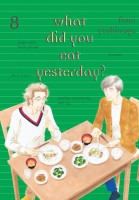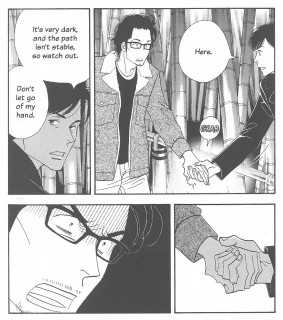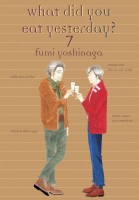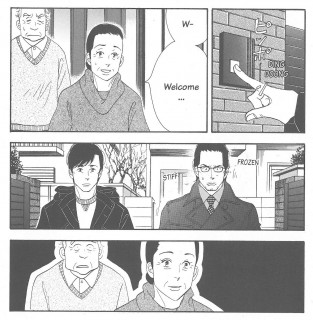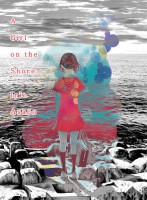 Creator: Inio Asano
Creator: Inio Asano
U.S. publisher: Vertical
ISBN: 9781941220856
Released: January 2016
Original release: 2011-2013
Several of Inio Asano’s manga have been released in English in the past—Solanin, What A Wonderful World!, and Nijigahara Holograph—and I’ve read every one. While they all left a significant impression on me and can be difficult works, Nijigahara Holograph in particular floored me, further convincing me to seek out more of Asano’s manga. Vertical Comics published one of Asano’s more recent manga series A Girl on the Shore in early 2016. While the English-language edition of A Girl on the Shore is complete in a single omnibus, in Japan the series was originally released in two volumes which were published in 2011 and 2013. I didn’t actually know much about A Girl on the Shore before picking it up beyond the fact it was by Asano, but I rightfully anticipated that it would be a fairly challenging read in addition to being beautifully drawn.
Junior high can be a trying time for anyone as students become more aware of themselves and each other while hormones and the intense desire to belong complicate relationships and they make decisions that will greatly influence their futures. Koume has a crush on her upperclassman Misaki, but he turns out to be something of a playboy, taking advantage of her interest by receiving sexual favors with no intention of returning her feelings. In order to cope, Koume turns around and does the same thing to her classmate Keisuke who she had previously rejected after he confessed that he liked her. Keisuke and Koume both know that they’re manipulating and using each other, but that doesn’t stop their increasingly intimate relationship from evolving and their feelings from changing. Both of them are searching for some deeper connection and meaning in their lives. For a time, having sex together seems to satisfy that need, but in the end the physical relationship only obscures their underlying emotional crises.
 A Girl on the Shore contains numerous and frank depictions of teenage sex. However, the sexual content of the volume is integral to the story that Asano is telling and carries meaning beyond titillation. In fact, A Girl on the Shore provides a deliberately uncomfortable and voyeuristic reading experience, often showing events and personal encounters unfolding directly from the characters’ perspectives. Sex isn’t romanticized or idealized in the manga and carries with it significant repercussions. Koume and Keisuke’s relationship has consequences not only for them both, but for the others around them as well. Physically the two are intimate and daring, but there continues to be a separation between them and they remain emotionally distant. Their relationship is an incredibly important one and their feelings and needs become progressively intertwined, but they are never quite able to completely and truly connect with each other.
A Girl on the Shore contains numerous and frank depictions of teenage sex. However, the sexual content of the volume is integral to the story that Asano is telling and carries meaning beyond titillation. In fact, A Girl on the Shore provides a deliberately uncomfortable and voyeuristic reading experience, often showing events and personal encounters unfolding directly from the characters’ perspectives. Sex isn’t romanticized or idealized in the manga and carries with it significant repercussions. Koume and Keisuke’s relationship has consequences not only for them both, but for the others around them as well. Physically the two are intimate and daring, but there continues to be a separation between them and they remain emotionally distant. Their relationship is an incredibly important one and their feelings and needs become progressively intertwined, but they are never quite able to completely and truly connect with each other.
Asano’s works tend to be emotionally intense and A Girl on the Shore is no exception. The manga is filled with discontent and sadness that occasionally erupts in physical or psychological violence. A Girl on the Shore is coming-of-age story that can be brutally unsettling and hard-hitting. Koume finds herself drawn more and more towards Keisuke and the complicated power dynamics of their intimacy, seemingly oblivious of the toll that the relationship is taking on them both. Independent of that, Keisuke is also dealing with some heavy family matters and emotional issues of his own. Ultimately, one of the most prominent themes of A Girl on the Shore is loneliness and isolation even in the midst of a relationship. This is beautifully emphasized by Asano’s artwork in which detailed backgrounds, dramatic perspectives, layout and use of space form settings in which people seem set apart not only from others but the world around them as well. At times A Girl on the Shore can tend to be overwhelmingly bleak and tragic, but there is a deliberate narrative purpose and intent behind the pain and pessimism.



